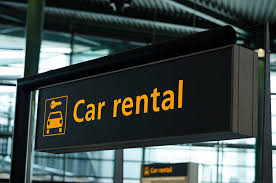
Rideshare Car Rental for Uber & DiDi Drivers in Australia
Why Rent a Car for Uber or DiDi? Starting as a rideshare driver is easier than ever, even if you don’t own a car. Rideshare car rental is a popular option for new Uber and DiDi drivers in Australia. Renting a car allows you to:. Start earning quickly without a large upfront investment, Access vehicles that meet Uber and DiDi’s requirements, Enjoy flexible rental terms (weekly or monthly), Avoid long-term financial commitments.
What Are the Requirements for Rental Cars?
Before you rent, make sure the vehicle meets the Uber car requirements or DiDi car requirements for your city:
General Rideshare Car Requirements (Australia, 2025)
Model Year: Most cities require cars to be less than 10 years old (check your city’s specific rules)
4 Doors: All vehicles must have four doors and be able to seat at least 4 passengers (excluding the driver)
Good Condition: No cosmetic damage, clean interior, working air conditioning
ANCAP Safety Rating: Minimum 5-star ANCAP safety rating
Registration: Must be registered in the state you plan to drive
Insurance: Comprehensive or rideshare-specific insurance is required


Popular Rental Car Models for Uber & DiDi
Toyota Corolla
Toyota Camry
Hyundai i30
Kia Cerato
Honda Civic
Toyota Prius (for Uber Green/Hybrid)












How Does Rideshare Car Rental Work?
Step-by-Step Guide:
Choose a Rideshare Rental Provider:
Popular options include Splend, DriveMyCar, Europcar, Hertz, and Uber’s own rental partners.Select Your Vehicle:
Pick a car that fits your budget and meets Uber/DiDi requirements.Sign Up & Provide Documents:
You’ll need your driver’s licence, proof of address, and sometimes a clean driving record.Pay a Bond/Deposit:
Most companies require a refundable security deposit.Pick Up Your Car:
Inspect the vehicle, sign the agreement, and start driving!Weekly/Monthly Payments:
Rental fees are usually paid weekly and include registration, insurance, and basic maintenance.


When it comes to costs, rideshare rental fees in 2024 generally range from $220 to $350 per week, depending on the car model and provider. You’ll also need to pay a refundable bond or security deposit, typically between $250 and $500. Some rental agreements offer unlimited kilometres, while others may charge extra if you exceed a set limit. It’s important to note that fuel is not included in your rental fee, so you’ll need to budget for your own petrol or diesel. To get the best deal, always compare different providers and look out for special offers for new drivers.
There are several advantages to renting a car for rideshare. You don’t need to make a large upfront investment, and you can enjoy flexible terms, returning the car when you no longer need it. Maintenance and insurance are usually included, and you’ll have access to newer, more reliable vehicles. However, there are also some downsides. Renting is generally more expensive per week than owning a car long-term, you won’t build any equity in the vehicle, and some providers have strict return conditions.
Some of the top rideshare car rental companies in Australia include Splend, which specialises in rideshare rentals and offers driver support and flexible plans; Uber’s own rental partners, such as Hertz, Europcar, and Splend; DriveMyCar, which offers peer-to-peer rentals that can be more affordable; Karmo, which provides subscription-based car rental for rideshare; and traditional rental companies like Europcar and Hertz, which now offer rideshare options.
New drivers often have questions about the process. Most rental cars approved for Uber are also eligible for DiDi, but it’s always best to confirm with your provider. Rideshare insurance is required, and most rental companies include this in your weekly fee. If you have an accident, contact your rental provider and follow their procedures—be aware that an insurance excess may apply. Most providers require a full, unrestricted Australian driver’s licence, and while weekly rentals are common, some companies may have a minimum commitment period, such as four weeks.
If you’re new to rideshare, here are a few tips: always compare rental deals to find the best rates and inclusions, read the fine print for any extra charges like excess kilometres or cleaning fees, and keep the car clean to avoid penalties. Track your expenses using a tool like our Rideshare Income Estimator to see how rental costs affect your net income, and try to drive during peak times to maximise your earnings and cover your rental costs.
Renting a car is a great way to start your rideshare journey in Australia, especially if you want flexibility and minimal upfront costs. For more information, tips, and the latest deals, check out our full Rideshare Car Rental Guide.
If you’re looking to start driving for Uber or DiDi in Australia but don’t own a suitable vehicle, rideshare car rental is a popular and practical solution. Renting a car for rideshare work allows you to get on the road quickly without the need for a large upfront investment. Most Uber car rental Australia and DiDi car rental Australia packages are designed to make your experience as smooth as possible. Typically, your weekly rental fee includes comprehensive insurance tailored for rideshare work, so you’re covered every time you pick up a passenger. Registration and compulsory third-party (CTP) insurance are also taken care of by the rental provider, ensuring you meet all legal requirements. Regular servicing and maintenance are usually included, though you may be responsible for minor wear and tear. Many providers also offer 24/7 roadside assistance, giving you peace of mind if you ever break down while working.

Ready to Start Driving?
Explore your options, compare rental providers, and use our Income Estimator to plan your rideshare journey. Renting a car is a great way to start earning with Uber or DiDi in Australia—no car ownership required!
Need more help?
Check out our Driver Resources or contact us for personalised advice on getting started with rideshare car rental in your city.